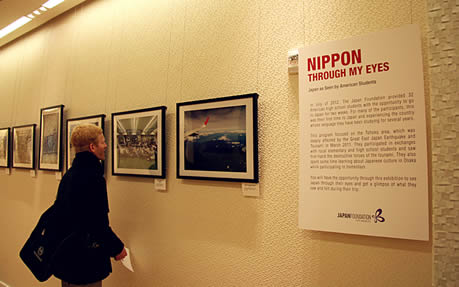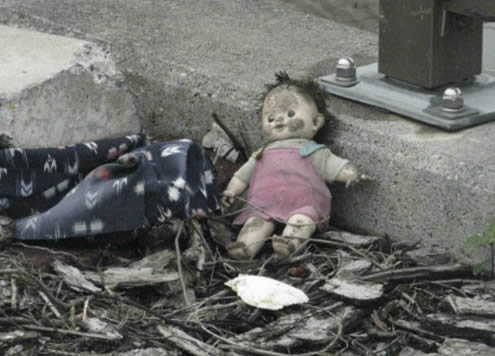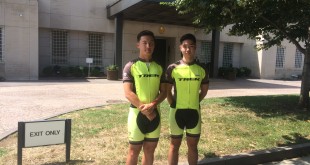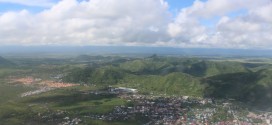By Yuhui Wang
Photo Exhibition by American High School Students in Japan During the Summer of 2012


The massive March 11 earthquake and tsunami that hit Japan in 2011 was the most powerful known disaster ever to have hit the island nation. It left parts of the country destroyed and devastated the lives of many Japanese people.
The Japan Culture and Information Center (JICC) in Washington, DC, has commemorated the tragedy with an exhibit of 32 photographs providing a visual tour of the aftereffects of the Great East earthquake and tsunami, as seen through the eyes of American high school students.
In the summer of 2012, the Japan Foundation’s Japan Exchange and Teaching Memorial Invitation Program (JET-MIP), a two-week program dedicated to two English teachers who lost their lives in the Tohoku region during the disaster, arranged for 32 American high school students to travel to Japan.
With the theme of “bridge building,” the program encouraged participants to continue their study of Japanese, promote youth exchanges such as the JET program, and create student networks to build lasting friendships and mutual understanding between Japan and the U.S. Students visited the hardest hit cities of Rikuzentakata, Kesennuma, and Ishinomaki, experienced cultural activities, and documented their experiences through photographs.
Some of those photographs are on exhibit at JICC, Embassy of Japan through March 12.
Ranging from glimpses into the heartbreaking destruction after the disaster to encouraging scenes of hope, the exhibition vividly shares the American students’ impressions of Japan from diverse perspectives. The journey starts by looking down through the window in the sky, at the serene first visual impression of Japan. “Physically travelling through Japan seemed to make the theme of bridge-building all the more literal,” says Lena Morrow, a participant from Oregon who captured this moment from the air.
During the visit to Rikuzentaka, Indica Sur discovered a baby doll covered by dirt and lying on a bridge. Seemingly sad and waiting for her owner’s return, the doll represents a tiny facet of the suffering people in Rikuzentakata have endured. Despite highlighting the anguish, Indica also attempts to use the photo to deliver a message: that people are standing strong and continuing to move forward.
Hope Among Destruction – Emily Domingue (VA)
In contrast to all the damage left in the city, and even though everything around it was bare and broken, there was a green crane hiding in rocks. Through Emily Domingue’s eyes, signs of hope exist everywhere in Japan, just as this crane survived among destruction, symbolizing a new life breaking out in the dark with great hope.
Crossing the Bridge – by Jessica Kawana (HI) Ganbappe! By Carolyn Jeon (IL)
Contrasting with the dreadful images of devastation, Jesscia Kawana discovered this view of people crossing a bridge and walking toward the blossom, which echoes the program’s theme of bridge building and hope that “together we can bridge any gap and overcome any challenge.”
“Ganbatte Nippon!” It means, “You can do it, Japan,” a spiritual phrase often heard and seen in Japan, especially after March 11. In Tohoku region, you can find “Ganbappe Tohoku” in the local dialect, just as the ones in Carolyn Jeon’s photo testify to the strong spirit of the Japanese people as they move toward full recovery.
“When you see what’s happening in Japan, you are reminded that for all our differences in culture or language or religion, that ultimately humanity is one”, said President Obama in March, 2011. Since then, the U.S. has joined the effort to help Japan recover and rebuild. Promoting youth exchange programs such as the JET-MIP reflect the concept of “humanity is one” and the theme of bridge building as each participant helps build bonds between the countries.
The exhibit runs Monday to Friday from 9:00am to 5:00pm until March 12 at JICC, Embassy of Japan, 1150 18t Street NW, Suite 100, Washington, DC.
 Asian Fortune Your source for all things Asian American
Asian Fortune Your source for all things Asian American


